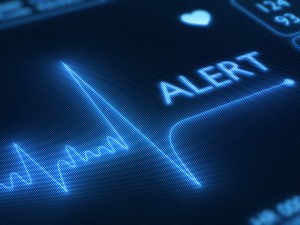 We’ve all been in hospitals that are too noisy. But have you ever been in one that’s so quiet that you wonder if anyone is there?
We’ve all been in hospitals that are too noisy. But have you ever been in one that’s so quiet that you wonder if anyone is there?
I have, and it was a little eerie. I wonder how the patients felt. Alone, perhaps? Or maybe they liked it. Now that noise is on the HCAHPS questions given to patients, we might be able to answer these things by looking at the data.
Without a doubt, many sounds in hospitals are stressors — for both patients and staff. Things like overhead pagers, beeping alarms, ice machines, people talking, and commercial TV. The design of the physical environment can help mask and even reduce these sounds, but creating operational protocols that address the issue is another story.
Recently, the Joint Commission released a “Sentinel Event Alert” report claiming that as a result of a barrage of alarm signals (many of which are not needed) that clinicians suffer from “alarm fatigue” that may be causing harm to patients. An estimated 85-99% of alarm signals do not require clinical intervention.
This is not surprising. And there are some good solutions offered up in the Joint Commission report. Other good reports/white papers worth reading on the topic of reducing noise in hospitals are:
- The Beryl Institute: “Charting a Course to Quiet: Addressing the Challenge of Noise in Hospitals.”
- The Center for Health Design: “Validating Acoustic Guidelines for Healthcare Facilities–Evidence-Based Design Meets Evidence-Based Medicine: The Sound Sleep Study”
- Healing HealthCare Systems: “Hospital Noise and the Patient Experience: Seven Ways to Create and Maintain a Quieter Environment”
P.S. Please do me a favor — if you liked this post and like this blog, please share it with others by sending them the link or posting it on your Twitter, LinkedIn, or Facebook. Also, don’t forget to subscribe, so you’ll get emails when new content is posted. Thanks!
If you like this post, please share.

What’s my story? I’m a healthcare and senior living design knowledge expert who writes and speaks frequently about trends and issues affecting these two industries. I’m also a strategic marketing consultant and content creator, working with companies and organizations who want to improve the quality of healthcare and senior living through the design of the physical environment. You can reach me at [email protected].


2 Responses
Thank you Sara for referencing our work with The Beryl Institute and providing additional resources for those working on this sound quality issue. I say Sound Quality, because as you point out, it is not about Silence. Silence and Quiet are very different. Silence is not desired, nor achievable. It makes higher acuity patients feel isolated and scared. Nurse call rates increase as a result. The best solution is when good sounds are louder than bad noises most or all of the time. This is the perception of quiet that needs to be achieved. This is soundscaping.
Gary Madaras, PhD
Making Hospitals Quiet
You’re welcome, Gary! And you are so right, what we’re really talking about here is sound quality and the “soundscaping” of the environment. Thanks for your comments.